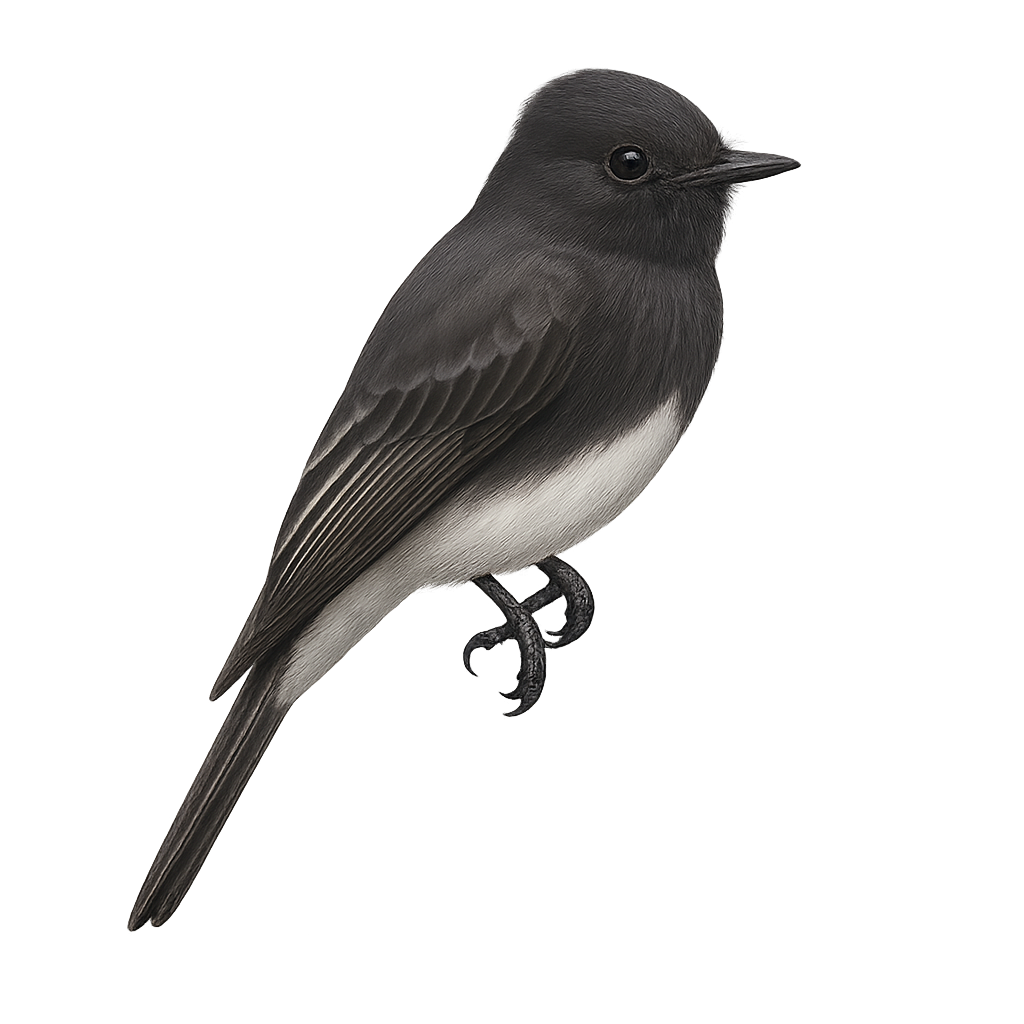Your wildlife photography guide.
Explore the black phoebe in detail, study its behavior, prepare your shots.
Where to observe and photograph the black phoebe in the wild
Learn where and when to spot the black phoebe in the wild, how to identify the species based on distinctive features, and what natural environments it inhabits. The WildlifePhotographer app offers tailored photography tips that reflect the black phoebe’s behavior, helping you capture better wildlife images. Explore the full species profile for key information including description, habitat, active periods, and approach techniques.
Black Phoebe
Scientific name: Sayornis nigricans

IUCN Status: Least Concern
Family: TYRANNIDAE
Group: Birds
Sensitivity to human approach: Suspicious
Minimum approach distance: 5 m
Courtship display: March to May
Incubation: 15-17 jours
Hatchings: March to June
Habitat:
Rivers, ponds, wetlands
Activity period :
Primarily active during the day, with peak activity in the morning and late afternoon.
Identification and description:
The Black Phoebe, Sayornis nigricans, is a medium-sized bird belonging to the Tyrannidae family. It is characterized by its black and white plumage, with a black head, back, and tail contrasting with a white belly. This bird is often seen near streams, ponds, or wetlands, where it hunts flying insects. Its flight is marked by rapid wing beats and short glides. The Black Phoebe is a sedentary bird, primarily found in the southwestern United States, Mexico, and Central America. It is known for its melodious and repetitive song, often heard in spring and summer.
Recommended lens:
400mm – adjust based on distance, desired framing (portrait or habitat), and approach conditions.
Photography tips:
To photograph the Black Phoebe, it is advisable to use a telephoto lens of at least 400mm to capture precise details without disturbing the bird. Look for areas near water, as this bird is often seen hunting insects over water. Be patient and discreet, as although it is suspicious, it can tolerate a calm human presence. Take advantage of the early morning or late afternoon hours to benefit from soft and flattering light.
The WildlifePhotographer App is coming soon!
Be the first to explore the best nature spots, track rutting seasons, log your observations, and observe more wildlife.
Already 1 430 wildlife lovers subscribed worldwide

